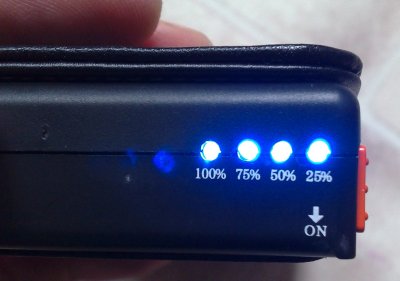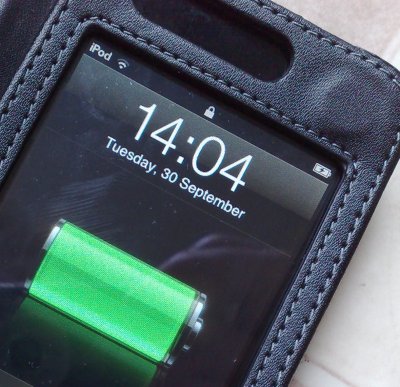My Apple iPhone doesn’t need charging anymore! Well, at least that’s what I’d like to say.
My intention, while testing the Brando Solar Charger Sheath (called the ‘Solar powered leather case‘ on their site), was to not have to plug my iPhone into the wall or into a PC or Mac – I wanted to run completely green. And the weather’s been playing ball too, with back to back sunshine for 3 days in the UK Autumn.
In terms of design, the case itself is as converged as the iPhone, although I have to report that there are a few serious caveats and flaws that should be noted. Read on…
Let’s look at the case itself. The outside flap contains a large solar panel, which generates power to charge either the built-in 1500mAh battery (very thin, this, it forms the backplane of the case) or to directly charge the iPhone (or iPod Touch, as here), depending on which position you’ve got the master switch in.
For most purposes, and unless you have ready bright sunlight, it makes sense to have the solar panel trickle charging the built-in battery all day each day, and then the built-in cell recharges the iPhone in a strong burst of current at some point convenient to you each evening. That’s the theory, anyway.
Now, this sort of ‘store sunlight during the day and charge each evening’ solution has been around for a while in terms of standalone accessories, but this is the first time a converged ‘no wires’ solution has been attempted, to my knowledge.
The device slots in very neatly into the main body of the case – the sheathed phone is more bulky, of course, but then any case adds bulk. In this case, the charging electronics are all contained in the bottom centimetre or so, with LEDs to indicate solar charging (they pulse every now and then) or the amount of charge left in the built in Li-Polymer battery (the four segments form a bar graph). The orange master switch is for starting and stopping charging the iPhone.
So how well does it all work? Not very well, if I’m honest. Black mark 1: the LED indicators don’t seem very accurate, so what you think is a full charge turns out to be less than half a charge.
Black mark 2: the case design, by necessity means that you can’t plug your headphones in. Which means you have to keep taking the iPhone in and out of the case.
Black mark 3: actually getting it out is tricky. I evolved a way of using my thumbnails at the side-bottoms of the case to lever the iPhone/iPod out of the leather cladding. But it’s not easy.
Black mark 4: the camera is also blocked. Something else that you have to extract your device to use.
Even in optimum, sunny conditions, you’ll need at least a full day’s charge in order to recharge a flat iPhone up to about half capacity (remember that these electricity transfers aren’t very efficient). So there’s no practical way to stay ‘green’ even if you use your iPhone even moderately – the physics and stats just don’t add up.
It’s also possible to charge the accessory using a miniUSB mains charger, but you’re still limited by the capacity of the battery. Better, I would have thought, to get a standalone battery power pack of 2400mAh or 3600mAh for $50 or so, and keep this trickle charging from the mains or your laptop, ready for delivering a guaranteed 100% full charge for an iPhone when needed in an emergency.
So, much as I would love to go green, I don’t think Brando’s solar charger case is the one for me – yet. Marks for trying guys, I really mean that, but wake me when you’ve doubled the battery capacity, improved the charge monitoring electronics and included a camera aperture.




